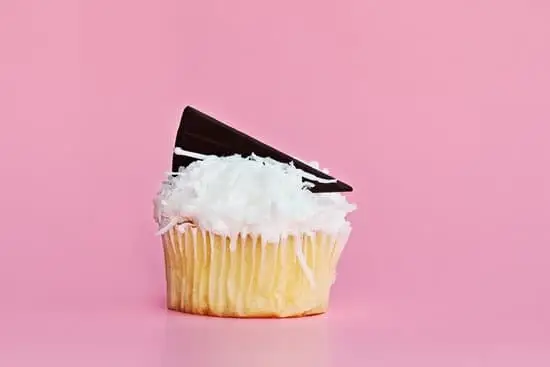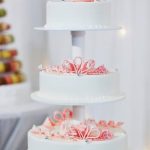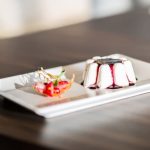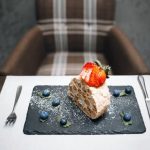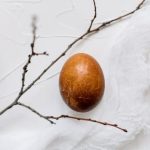Are you ready to elevate your baking game and create stunning masterpieces? In this article, we will delve into the exciting world of cake decorating and uncover what essentials you need to turn a simple cake into a work of art. Whether you are a beginner looking to learn the basics or an experienced baker seeking new techniques, understanding how to decorate a cake can take your creations to the next level.
When it comes to decorating a cake, having the right tools is essential. From piping bags and tips for intricate designs to an offset spatula for smooth finishes, each tool plays a crucial role in bringing your vision to life. Additionally, utilizing a turntable can make the process smoother by allowing you to rotate the cake easily as you decorate. These basic tools set the foundation for creativity and precision in cake decoration.
Furthermore, exploring different icing options is key when decorating a cake. The debate between fondant and buttercream has long been discussed in the baking community. Understanding the differences between these two types of icing can help you choose the best option based on your design preferences and skill level. Whether you opt for the smooth finish of fondant or the creamy texture of buttercream, each icing offers unique opportunities for creativity in cake decoration.
Essential Tools
Decorating a cake can truly elevate its presentation and make it a showstopper for any occasion. To achieve beautiful and professional-looking decorations, it is essential to have the right tools at your disposal. Knowing what you need to decorate a cake is crucial in ensuring your creations turn out as envisioned.
One of the most essential tools for cake decoration is piping bags. These are used to pipe frosting, buttercream, or royal icing onto cakes in intricate designs. Paired with various tips that come in different shapes and sizes, piping bags are versatile instruments that allow for creativity in decorating. Additionally, an offset spatula is indispensable for smoothing frosting and spreading layers evenly on a cake.
Another must-have tool for cake decorators is a turntable. This rotating platform makes it easier to frost the sides of a cake and apply decorations uniformly around the entire surface. It provides stability and precision when working on intricate designs. In addition to these basic tools, having items like a bench scraper, icing smoother, and decorating comb can further enhance your cake decorating skills and help you achieve professional results.
It’s important to invest in quality tools that will last and aid in creating impressive cakes. Whether you’re just starting with cake decoration as a hobby or looking to take your skills to the next level, having the right tools at your disposal is key to success.
From basic necessities like piping bags and tips to more advanced equipment like airbrush kits and edible printers, equipping yourself with the proper tools will enable you to unleash your creativity and bring your cake decorating ideas to life.
| Tool | Function |
|---|---|
| Piping Bags | Used for piping frosting or royal icing onto cakes |
| Offset Spatula | Ideal for smoothing frosting and spreading layers evenly on cakes |
| Turntable | A rotating platform that aids in frosting cakes and applying decorations uniformly |
| Bench Scraper | Helps create clean edges on cakes after frosting application |
Fondant vs Buttercream
When it comes to decorating a cake, one of the crucial decisions you’ll have to make is choosing between fondant and buttercream icing. Each has its own unique characteristics that can significantly impact the final look and taste of your creation. Let’s delve into the differences between fondant and buttercream to help you decide which one suits your needs best.
Here Are Some Key Points to Consider
- Texture: Fondant is a smooth, pliable icing that gives cakes a polished, flawless finish. On the other hand, buttercream is creamy and soft, perfect for creating textured designs.
- Taste: Fondant has a sweet flavor but may not be everyone’s favorite due to its chewy texture. Buttercream, on the other hand, is rich and creamy, adding a delicious layer of flavor to your cake.
- Workability: Fondant can be rolled out and draped over cakes for a seamless look, making it ideal for intricate designs like sculpting or covering multi-tiered cakes. Buttercream is great for piping intricate details and creating different textures on the cake surface.
Now that you have an understanding of the differences between fondant and buttercream, consider what effect you want to achieve with your cake decoration. Some decorators prefer using both icing types in combination to leverage their unique qualities for a stunning finished product. Experimenting with different techniques can help you discover your preferred style when it comes to decorating cakes.
If You’re Still Unsure About Which Icing to Use,
- Consider your skill level: Fondant may require more practice and expertise to work with compared to buttercream.
- Reflect on the occasion: The type of event or celebration may influence your choice of icing – fondant tends to be more formal while buttercream offers a more rustic appeal.
- Consult with fellow bakers or mentors: Seeking advice from experienced bakers can provide valuable insights on what works best for different cake decorating projects.
Remember that both fondant and buttercream have their own strengths and weaknesses, so don’t hesitate to experiment with both options until you find what works best for you in creating beautifully decorated cakes.
Color and Design
Decorating a cake goes beyond just making it look visually appealing – it is also about creating a harmonious and well-designed masterpiece that will leave a lasting impression. One of the key elements in achieving this is understanding the importance of color theory and design principles when decorating a cake. By paying attention to these aspects, you can elevate your cake decorating skills to the next level.
When it comes to color theory, it is crucial to select the right color scheme that will complement the theme or occasion of the cake. Whether you opt for monochromatic, analogous, complementary, or triadic colors, each choice will evoke different emotions and aesthetics. By understanding how colors interact with each other, you can create visually stunning designs that are not only pleasing to the eye but also convey the intended message or mood effectively.
In addition to color theory, design principles play a vital role in creating a well-balanced and visually appealing cake decoration. Elements such as balance, emphasis, rhythm, contrast, and unity should all be considered when planning the design of your cake.
By incorporating these principles into your decorating process, you can ensure that every detail on your cake serves a purpose and contributes to the overall aesthetic appeal. So whether you are going for a simple and elegant design or a bold and intricate one, paying attention to color theory and design principles will help you achieve stunning results that will impress everyone who sees your creation.
- Choose a color scheme that complements the theme of your cake
- Understand how different colors interact with each other
- Consider design principles like balance, emphasis, rhythm, contrast, and unity
Techniques
Piping
One of the most popular and versatile techniques in cake decorating is piping. Piping involves using a piping bag with different tips to create various designs on cakes. With just a little practice, you can create intricate flowers, borders, writing, and so much more.
Different tips can be used to achieve different effects, from thin lines to elaborate ruffles. Experimenting with different tips and techniques can help you enhance the overall look of your cake and add a personal touch to your design.
Fondant Sculpting
Fondant sculpting is another creative technique that allows decorators to mold edible dough-like icing into elaborate shapes and designs. Fondant can be rolled out like dough and shaped into 3D figures, flowers, ribbons, bows, and more. Using fondant allows for precise detailing and offers a smooth finish to cakes, giving them a professional look. Whether you’re creating a wedding cake topper or a themed birthday cake, fondant sculpting gives you the flexibility to bring any idea to life.
Stenciling
Stenciling is a simple yet effective technique that adds intricate patterns and designs to cakes. By placing a stencil over the surface of the cake and then dusting it with powdered sugar or cocoa powder, you can transfer beautiful designs onto your cake. Stencils come in various patterns and themes, allowing you to customize your cake decoration according to the occasion or theme.
Whether you want a delicate lace pattern or bold geometric shapes, stenciling is an easy way to elevate your cake décor without requiring advanced skills. Experiment with different stencils and colors to create stunning visual effects on your cakes.
Embellishments
Edible flowers are another stunning option for embellishing cakes. From delicate roses to vibrant pansies, edible flowers not only enhance the aesthetics of a cake but also bring a touch of elegance to any occasion. These flowers can be either store-bought or handcrafted from gum paste or fondant for a more personalized touch. Additionally, chocolate decorations like curls, shavings, and ganache drips can add sophistication and indulgence to your cake designs.
When considering what you need to decorate a cake with embellishments, it is essential to have a variety of options on hand. While sprinkles and edible flowers are versatile choices suitable for most cakes, having chocolate decorations like shards or molds can cater to more specific themes or styles. Experimenting with different types of edible embellishments can help you discover your unique cake decorating style and impress your friends and family with visually appealing desserts.
| Embellishment Type | Description |
|---|---|
| Sprinkles | Colorful and versatile toppings that add fun elements to cakes |
| Edible Flowers | Elegant blooms that enhance the aesthetic appeal of cakes |
| Chocolate Decorations | Sophisticated adornments made from chocolate that add indulgence |
Personalization
When it comes to decorating a cake, personalization plays a crucial role in adding a special touch to any celebration. Whether you are baking a cake for a birthday, anniversary, or other special occasions, custom decorations can truly make the dessert unique and memorable.
One of the most popular ways to personalize a cake is through edible images. These images are printed on edible paper using food coloring and can feature anything from a favorite cartoon character to a cherished family photo.
Edible Images
To incorporate edible images into your cake decoration, all you need is the desired image and a printer that uses edible ink cartridges. Simply print the image onto the edible paper and carefully place it onto the frosted cake.
You can choose to cover the entire surface of the cake with one large image or create multiple smaller images for a more artistic design. Edible images are perfect for themed parties or events where you want to showcase a specific message or design.
Monograms
Another popular way to personalize a cake is by incorporating monograms into the decoration. Monograms are individual letters or symbols that represent someone’s initials or name. They can be created using fondant, royal icing, chocolate molds, or even piped directly onto the cake using buttercream frosting. Monograms add an elegant and sophisticated touch to any cake and are perfect for weddings, anniversaries, or other formal celebrations where you want to showcase the names of the guests of honor.
Troubleshooting
When it comes to decorating a cake, it is not uncommon to encounter some challenges along the way. From uneven frosting to cracked fondant, there are various common issues that cake decorators may face. However, with the right knowledge and techniques, these problems can easily be overcome.
One of the common issues that decorators face is air bubbles in their fondant. To avoid this, make sure to knead your fondant thoroughly before rolling it out and gently smooth it over the cake to prevent trapping any air underneath.
Another common problem that many decorators come across is achieving smooth buttercream frosting on a cake. To combat this issue, try using a bench scraper or offset spatula dipped in hot water to smooth out the frosting evenly.
Additionally, chilling the frosted cake for a few minutes before smoothing it can also help create a seamless finish. It’s important to remember that practice makes perfect when it comes to decorating cakes, so don’t get discouraged if things don’t turn out perfectly the first time.
In case you find yourself dealing with a cake that has crumbs mixing into the icing while frosting, creating an unattractive appearance, try using a crumb coat layer before applying the final coat of frosting. This thin layer of frosting seals in any loose crumbs and makes it easier to achieve a clean finish on your cake.
By being aware of these common issues and having strategies on how to troubleshoot them, you can confidently tackle any obstacles that come your way while decorating a cake.
Conclusion
In conclusion, decorating a cake is not just about making it visually appealing but also about showcasing your creativity and personal touch. By using the essential tools like piping bags, tips, offset spatula, and a turntable, as well as understanding the differences between fondant and buttercream icing, you can elevate your cake decoration skills to the next level.
Color theory and design principles play a crucial role in creating eye-catching cakes that are sure to impress. Whether you prefer traditional piping techniques or more intricate fondant sculpting, exploring different methods of cake decoration will allow you to discover your personal style and preferences. Additionally, edible embellishments like sprinkles, chocolate decorations, and edible flowers can add an extra layer of sophistication to your creations.
Remember that practice makes perfect when it comes to cake decorating. Don’t be afraid to experiment with new techniques and designs to truly personalize your cakes. Troubleshooting common issues experienced during cake decoration will help you improve your skills over time. So gather your tools, unleash your creativity, and start your cake decorating journey today by putting into practice what I need to decorate a cake.
Frequently Asked Questions
What Are the Materials Needed to Decorate Cake?
Decorating a cake requires a few essential materials to bring your creative vision to life. Some key materials include decorating tips, piping bags, offset spatula, turntable, cake leveler, icing smoother, and pastry brush.
What Ingredients Do You Need to Decorate a Cake?
When it comes to decorating a cake, having the right ingredients is crucial for success. Key ingredients in cake decorating include buttercream or fondant icing, food coloring gels or powders, edible decorations like sprinkles or edible pearls, and flavorings like vanilla extract or almond extract.
What Are the Three Essentials of Cake Decorating?
The three essentials of cake decorating are precision, creativity, and patience. Precision is needed when measuring ingredients and executing intricate designs. Creativity allows you to bring your unique ideas to life. Patience is essential as decorating a cake can be time-consuming but rewarding in the end.

Welcome to our cake decorating blog! My name is Destiny Flores, and I am the proud owner of a cake decorating business named Cake Karma. Our mission is to provide delicious, beautiful cakes for all occasions. We specialize in creating custom cakes that are tailored specifically to each customer’s individual needs and tastes.

